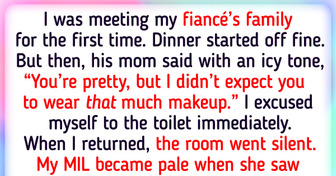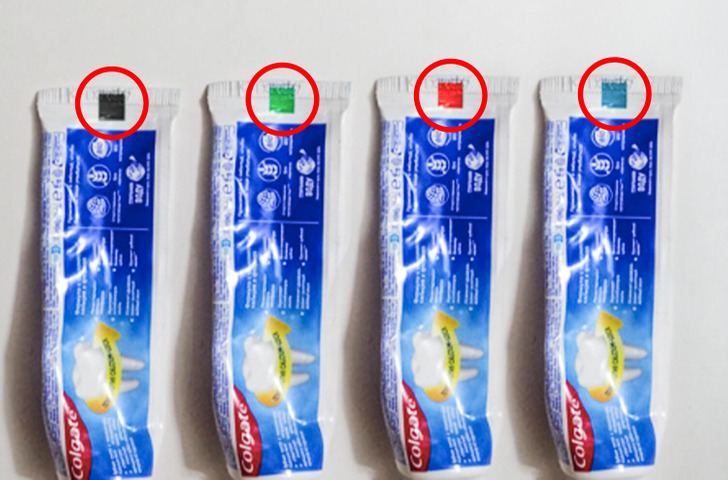My Future MIL Publicly Shamed Me — I Made Her Regret It


We all want to stay healthy, so it’s only natural to follow advice that seems like common sense. But what if some of those so-called “facts” aren’t true at all? Over the years, many health beliefs have been passed down without question—until science stepped in to set the record straight.
It turns out, not everything we’ve been told is as reliable as it seems. Get ready to separate fact from fiction!
Content is provided for informational purposes only and is not intended as a substitute for medical advice. Seek guidance from your doctor regarding your health and medical conditions.

The little colored squares on toothpaste tubes have nothing to do with ingredients. They’re just markers used in manufacturing to help machines detect where to cut and seal the packaging. Checking the ingredient list is the only way to know what’s in your toothpaste. Don’t let packaging myths decide what goes in your cart.
Hand sanitizer is handy, but it’s not a total replacement for good old soap and water. While it knocks out many germs, it doesn’t get rid of everything. Some stubborn bacteria and viruses (like norovirus and Clostridium difficile) can still stick around. Soap and water don’t just kill germs; they wash them away, along with dirt and grime, making them the real hygiene heroes.
After gardening or handling raw meat, only soap and water can do the deep clean your hands need!
Relax—your biggest worry isn’t the seat itself. Most germs don’t last long on hard, cold surfaces like toilet seats. The real risk? Touching germy surfaces like flush handles, door knobs, and faucets, and then touching your face.
The best defense? Wash your hands well after using a public restroom—because it’s what you touch, not where you sit, that really matters!
Don’t let the clouds fool you! Up to 80% of UV rays can still reach your skin, even when the sun is hiding. That means you’re still at risk for sunburn, premature aging, and even skin cancer.
Ever gotten a sunburn on an overcast day? That’s because UV rays are stronger than they look. So, no matter the weather—sunscreen is a must!
It might save time, but it’s not the best move for your oral hygiene. Showers are warm, damp environments, aka the perfect breeding ground for bacteria. That’s why keeping your toothbrush in there is not ideal.
Nice try, but bacteria doesn’t check the clock! The moment food hits the floor, germs can latch on—whether it’s been one second or five. And if the floor isn’t squeaky clean, the risk is even higher.
Bottom line? If it drops, think twice before you pop it in your mouth. Some bacteria are faster than you think!
Helping the planet is great, but not if your bottle turns into a germ factory. Bacteria from your mouth build up fast, and if left unchecked, your bottle can become a home for toxic fungi.
The fix is simple. Wash it every day with soap, water, and a bottle brush. A cleaner bottle means cleaner sips with no unwanted extras.
Slathering on too much moisturizer can do more harm than good. Your skin naturally produces oils, but when it senses extra moisture, it slows down its own production. Overdoing it can weaken your skin’s barrier, leading to clogged pores and breakouts.
Consistency is key. Moisturizing twice a day is enough to keep skin balanced. Cleansing or exfoliating first helps your moisturizer work better without needing excess product.
Sugar gets the blame, but carbohydrates are the real troublemakers. When bacteria in your mouth break down carbs, they release acids that weaken enamel and lead to cavities. Acidic foods and drinks make things even worse.
Good oral hygiene is the best defense. Brushing, flossing, staying hydrated, and regular dental check-ups help keep cavities away.
While they feel relaxing, hot showers strip away natural oils, leading to dryness and irritation—especially in colder weather. Too much heat can leave skin vulnerable and dehydrated. If skipping hot showers isn’t an option, keeping them short (around two minutes) helps minimize damage. Moisturizing right after locks in hydration and keeps skin healthy.
Wearing tight clothing at night traps moisture, creating a breeding ground for bacteria. This can be especially risky for women, increasing the chance of infections. Sleeping without undergarments allows the body to breathe, reducing these risks. If wearing them feels more comfortable, changing into a fresh pair every night helps maintain hygiene.
Are you guilty of falling for these popular health beliefs? Don’t worry, you’re probably not the only one! Here are 10 other popular myths everyone still falls for.











